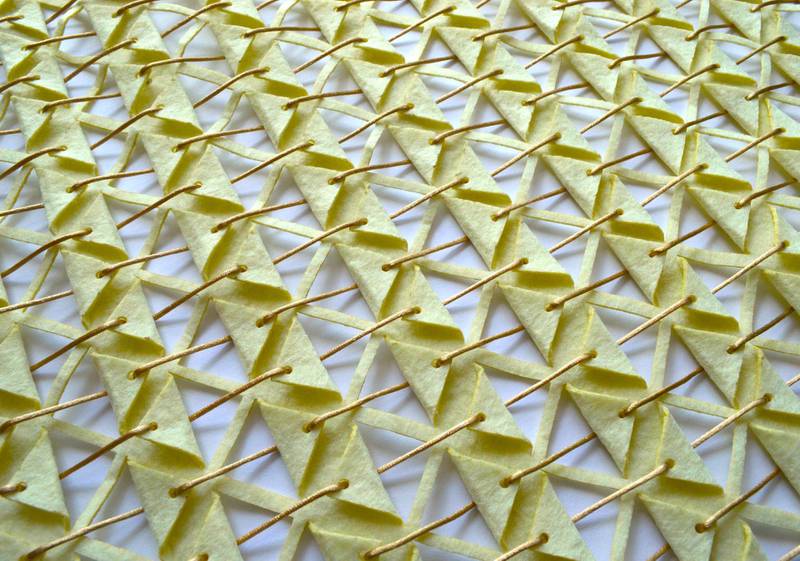The textile fabric of contemporary textile artists are weaving today's cultural movements into their work

Textiles carry with them lots of stories,” Aditi Patwari, a textile artist and designer who has been living in Dubai since 2016, says. “They tell of the hands that made them, the time they were made in, the purpose they were made for and how they have been passed down through generations.” They can also be a symbol of freedom and self-sufficiency.
The founder of Dea, a textile company in Dubai that makes bespoke art pieces, gives the example of khadi, a fabric made out of hand-spun cotton in India. Khadi gained prominence in India during the late 1800s, when the country was still under British colonial rule. "Mass-produced fabrics made in Britain were taking over the market, replacing Indian fabrics and leaving Indian spinners and weavers unemployed," Patwari tells The National.
As the Swadeshi movement – part of the Indian independence movement – gained traction, Indians began to boycott British textiles and produce their own cotton and fabrics.
But it's not just traditional forms of textile that are laden with meaning. Contemporary works are also rich in stories, albeit with a more personal touch than their traditional counterparts.
“Let’s look at our current situation; not only are we faced with the pandemic, but also the countless movements for human rights and equality around the world. The textile artists of today are recording these stories in their work just like khadi weavers and Persian carpet makers.”
It is usually difficult to ascertain an individual craftsperson behind a classic textile work, such as a Persian carpet or a khadi. That’s not the case with modern pieces. That's because many of today’s textile artists have developed a more individual approach to working with textiles, Patwari explains.
“They have personal brands and unique voices and experiences." She says contemporary artists create an echo of their individual beliefs and experiences in their textiles, rather than reworking a rendition of a popular design.
Patwari uses as an example the works of US artist Bisa Butler, whose large, colourful, quilted portraits often celebrate famous figures in black history.
“Her work has her signature quilting style with Kool-Aid colours that reflect her unique creative voice and style. In the past, textiles were seen as general crafts that can be found anywhere, with not much distinguishing one supplier from another. Today, I think artists are using textiles as a medium of self-expression, moving from craft and design to an art form.”
Charting the development of her own work, Patwari says she was drawn to the world of textiles from an early age. Growing up in India, surrounded by bright colours and patterns, she recalls being excited by the textures and fabrics in the markets and street shops.
But it was inside her own home where she was first exposed to the craft. “I learned many sewing techniques from my mother and grandmother growing up,” the Kolkata-born artist says. “At that time, it was just a fun hobby and a way of spending quality time with family.”
Patwari began seeing textiles as a medium of expression after moving to the UK in 2014 to study art at Bournemouth University. Her intention, at first, was to become an illustrator, but during her foundation year she found out there was an entire specialisation in textiles. "And I never looked back,” she says.
Her style is fairly singular in its approach, as she prefers to use a mix of traditional techniques, including hand embroidery and paper-cutting, with modern technology, such as digital printing, laser cutting and etching.
“A work might use only one of these techniques or all of them,” she says. “It usually depends on the artwork and collection, as each one tells a different story and requires different levels of complexity.”
Much of Patwari’s textiles are inspired by her travels and the culture of the cities she visits, often exploring the juxtaposing ideas of history and modern-day.
“This constant play between the past and the present is reflected in the techniques I use. By weaving traditional and modern techniques together, I hope to be creating a new textile visual language that is reflective of today.”
Useful Links:
